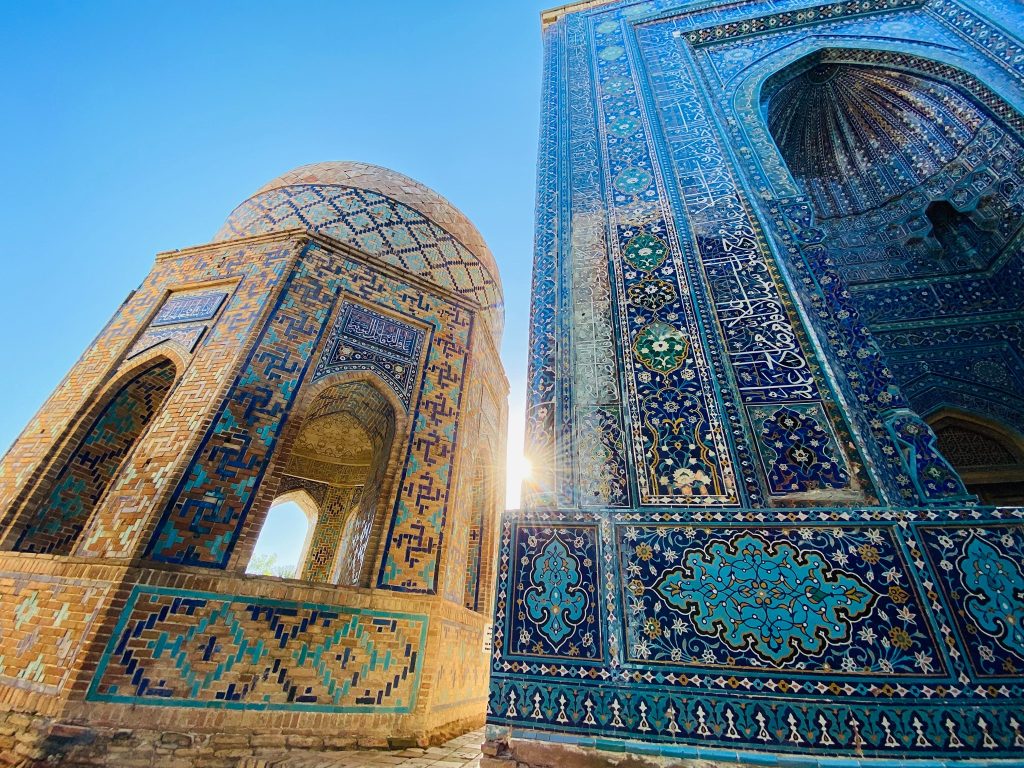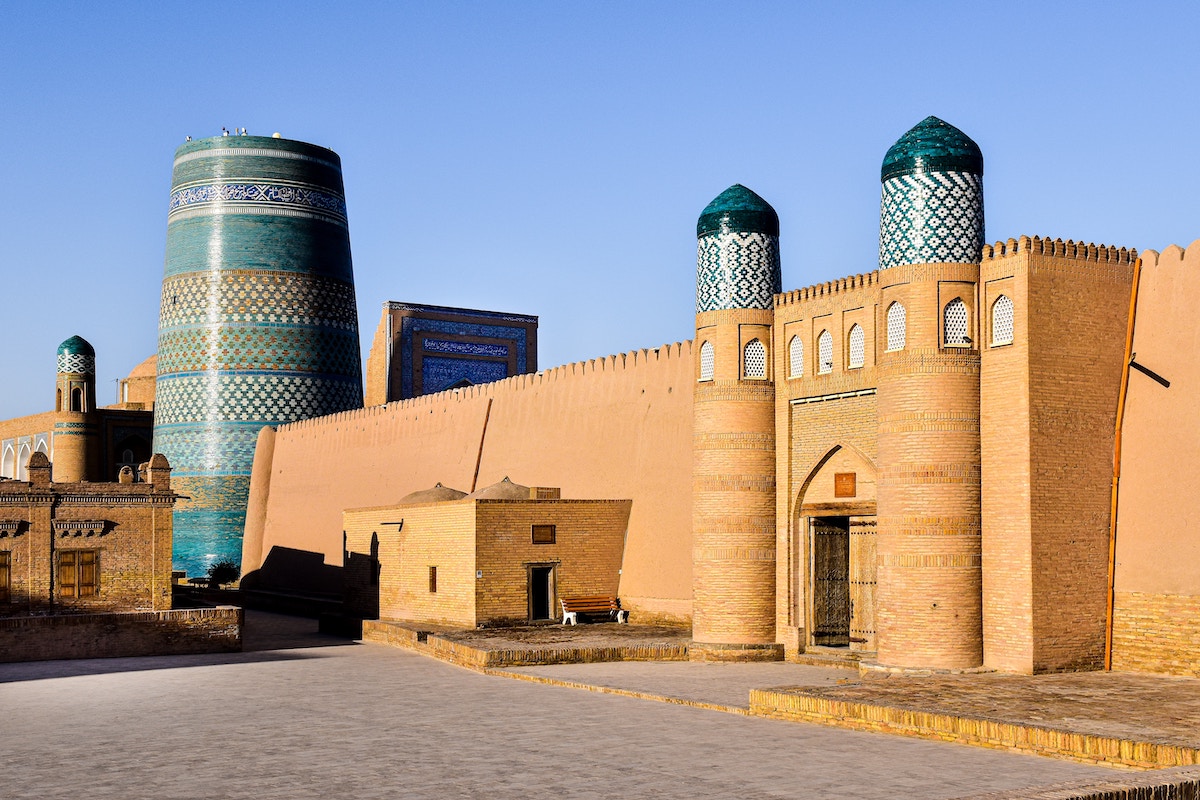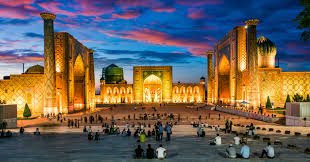Uzbekistan, a double-landlocked country in the heart of Central Asia, remains one of travel’s best-kept secrets. This ancient land, once the center of the legendary Silk Road, offers intrepid travelers a fascinating blend of stunning Islamic architecture, rich history, and warm hospitality. From the turquoise domes of Samarkand to the living museum of Khiva, Uzbekistan showcases a tapestry of cultural influences that have converged over thousands of years. If you’re seeking an authentic travel experience away from the typical tourist crowds, Uzbekistan delivers unforgettable adventures filled with breathtaking monuments, vibrant bazaars, and immersive cultural encounters.
Why Uzbekistan Should Be on Your Travel Radar
Uzbekistan is experiencing a tourism renaissance as travelers increasingly seek authentic destinations untouched by mass tourism. After significant reforms in recent years, including a simplified visa system and improved infrastructure, this Central Asian nation has become more accessible than ever. Uzbekistan offers a unique combination of affordability, safety, and extraordinary cultural wealth that few destinations can match.
The country’s location along the ancient Silk Road has blessed it with architectural masterpieces that rival those of more famous destinations, yet you’ll often find yourself exploring these wonders without the crowds that plague better-known sites. For travelers seeking something truly different, Uzbekistan represents the perfect blend of exotic adventure and practical accessibility.
1. Marvel at Samarkand’s Magnificent Registan Square
Registan Square stands as the crown jewel of Uzbekistan’s many architectural treasures. This spectacular complex in Samarkand features three ornate madrasahs (Islamic schools) facing a central plaza, creating one of the most awe-inspiring public squares in the world. Built between the 15th and 17th centuries, the Registan exemplifies the pinnacle of Islamic architectural achievement with its soaring portals, intricate tile work, and massive blue domes that seem to float against the desert sky.
The three madrasahs—Ulugh Beg Madrasah (1417-1420), Sher-Dor Madrasah (1619-1636), and Tilya-Kori Madrasah (1646-1660)—each tell a different chapter in Uzbekistan’s rich history. Visit in the early morning to catch the first light illuminating the azure mosaics or return in the evening when the buildings are dramatically lit, casting their reflections onto the square. For the ultimate experience, attend one of the sound and light shows that bring the history of this UNESCO World Heritage site to life.
Behind the magnificent facades, explore the former student cells that now house small shops selling traditional crafts, and climb the minarets for panoramic views of the city that was once considered the crossroads of world cultures.

2. Step Back in Time in Bukhara’s Ancient Old Town
Bukhara’s 2,500-year-old city center creates the sensation of walking through a living museum. This UNESCO World Heritage site contains over 140 protected monuments, creating the most complete example of a medieval city in Central Asia. Unlike many ancient cities that feel like open-air museums, Bukhara maintains an authentic lived-in atmosphere with locals going about their daily lives amid the historical splendor.
The heart of Bukhara is Lyabi-Hauz, a plaza built around a 17th-century pool that serves as the social center of the old town. Here, under the shade of ancient mulberry trees, you can enjoy a cup of green tea while watching the rhythm of local life unfold. Surrounding this central area, a labyrinth of narrow streets leads to architectural gems including the Kalyan Minaret, a 47-meter tower so impressive that even Genghis Khan spared it during his destructive conquest.
Don’t miss the Ark Fortress, Bukhara’s oldest structure and former royal residence, or the exquisite Samanid Mausoleum, considered one of the most perfect examples of Central Asian architecture. For a deeper understanding of local culture, visit the still-functioning Bolo Hauz Mosque and the numerous trading domes where merchants have sold their wares for centuries.
3. Experience Medieval Perfection in Khiva’s Walled City
Khiva’s Itchan Kala (inner city) presents the most intact example of a medieval Central Asian city, surrounded by massive mud brick walls that rise up to 10 meters high. This compact walled district measures just 400 by 650 meters but contains over 50 historic monuments and 250 traditional homes, creating a remarkably preserved urban ensemble that earned UNESCO World Heritage status.
Walking through the West Gate (Ata Darvoza), visitors enter a time capsule where every structure tells a story of the city’s past as a final caravan stop before crossing the desert to Iran. The unrestored nature of many buildings creates an authentic atmosphere rarely found in such well-preserved ancient cities.
Key highlights include the Kalta Minor Minaret, an unfinished tower covered in breathtaking turquoise tiles; the Juma Mosque with its hall supported by 213 wooden columns, some dating back to the 10th century; and the Islam Khoja Minaret, the tallest structure in Khiva offering panoramic views for those willing to climb its narrow, winding staircase. Stay overnight within the walls to experience the magical atmosphere after the day-trippers depart, when moonlight casts dramatic shadows across the ancient streets.
4. Discover the Artistic Legacy at Nukus’s Savitsky Museum
In the remote desert city of Nukus, an extraordinary cultural treasure awaits: the Savitsky Museum, often called “the Louvre of the Steppes.” This remarkable institution houses the world’s second-largest collection of Russian avant-garde art, saved from Soviet censorship by the passionate collector Igor Savitsky, who secretly brought forbidden artworks to this remote corner of Uzbekistan.
The museum’s collection includes over 90,000 items—from bold, experimental paintings that challenged Socialist Realism to traditional folk art from across Central Asia. The story behind this collection is as fascinating as the artworks themselves. During Stalin’s repressive regime, Savitsky risked his freedom to preserve artistic expressions that were condemned by Soviet authorities, creating an unexpected cultural haven in the Karakalpakstan desert.
Beyond the Russian avant-garde collection, explore galleries dedicated to the archaeological findings from ancient Khorezm civilization and stunning examples of traditional textiles, jewelry, and ceramics that showcase the rich artistic heritage of the region. The museum stands as a testament to the power of art to survive even the harshest political climates.
5. Trek Through the Stunning Nuratau Mountains
For travelers seeking natural beauty beyond Uzbekistan’s architectural wonders, the Nuratau Mountains offer a perfect escape. This scenic range in the northeastern part of the country provides a striking contrast to the desert landscapes that dominate much of Uzbekistan, with alpine meadows, walnut forests, and traditional villages seldom visited by foreign tourists.
The region has developed a sustainable community-based tourism system where travelers can stay with local families in traditional homes, enjoying farm-fresh food and authentic cultural exchanges. Hiking paths connect villages, allowing for multi-day treks through varied landscapes with stunning mountain vistas.
Don’t miss a visit to the sacred Chashma Spring in Nurata town at the foot of the mountains, believed to have healing properties since Alexander the Great established a fortress here in 327 BCE. Nearby, the shores of Lake Aidarkul—a massive man-made sea in the desert—offer opportunities for camel trekking, yurt stays, and encounters with local eagle hunters who maintain ancient traditions of Central Asian nomads.

6. Follow the Path of Pilgrims in Shah-i-Zinda Necropolis
The Shah-i-Zinda necropolis in Samarkand presents one of the most moving and visually stunning sites in all of Central Asia. This sacred complex contains mausoleums and ritual buildings constructed between the 9th and 14th centuries, creating a street of magnificent tombs where the turquoise tilework reaches a level of artistry rarely seen elsewhere.
Legend holds that the complex grew around the tomb of Kusam ibn Abbas, a cousin of the Prophet Muhammad who is said to have brought Islam to the region. The name “Shah-i-Zinda” means “The Living King,” reflecting the belief that he didn’t die but descended into a well at this site where he still lives.
As you climb the 36 steps to the complex (said to reveal a person’s purity of heart based on how many steps they count), you’ll pass through an avenue of mausoleums, each more intricately decorated than the last. The most stunning examples feature ceramic decoration techniques that were lost for centuries and have never been fully replicated. Visit in late afternoon when the low sun brings out the rich colors and detailed patterns of the ancient tilework.
7. Experience Authentic Uzbek Hospitality Through Homestays
While Uzbekistan’s architectural treasures provide ample reason to visit, the warmth of Uzbek hospitality creates the most lasting impressions for many travelers. Throughout the country, but especially in smaller towns and rural areas, homestay programs offer the chance to experience everyday life with local families.
In the Fergana Valley, known for its fertile land and traditional crafts, family stays often include demonstrations of silk production, from raising silkworms to weaving ikat fabrics using techniques passed down through generations. In the mountain villages of Baysun or Boysun, homestays might include participation in seasonal festivals, traditional music performances, or learning to prepare Uzbekistan’s national dish, plov (pilaf).
These homestay experiences typically include home-cooked meals shared with multiple generations of a family, offering insight into domestic traditions and social customs that would be impossible to gain in hotel settings. Many homestay hosts are skilled artisans who welcome visitors into their workshops, providing hands-on experiences in ceramics, woodcarving, or instrument making.
8. Savor the Flavors of Uzbek Cuisine at Local Markets
Uzbek cuisine represents one of Central Asia’s most diverse and flavorful culinary traditions, blending influences from nomadic, Persian, and Russian cooking. The best way to experience this rich food culture is by exploring the vibrant bazaars found in every Uzbek city, where centuries-old trading traditions continue amid displays of colorful spices, fresh produce, and artisanal foods.
Start at Chorsu Bazaar in Tashkent, the largest traditional market in Central Asia, housed under a massive blue dome. Here you can sample regional specialties like samsa (baked savory pastries), shivit oshi (dill-infused noodles), and kazan kabob (meat slowly cooked in a cauldron with vegetables). Follow your exploration with a visit to Central Asian Plov Center, where massive cauldrons produce the national dish in quantities serving hundreds of locals daily.
In Samarkand, the Siab Bazaar offers a feast for the senses with mountains of dried fruits and nuts alongside freshly baked non (round bread stamped with distinctive patterns). In smaller towns, don’t miss the opportunity to visit family-run chaikhanas (tea houses) where simple, home-style cooking often surpasses restaurant quality, especially when accompanied by the ritual of tea service that forms the cornerstone of Uzbek hospitality.
9. Shop for Unique Treasures in Traditional Craft Workshops
Uzbekistan maintains living traditions of craftsmanship that have been recognized by UNESCO as part of the Intangible Cultural Heritage of Humanity. Each region specializes in particular crafts: Margilan for its legendary silk production, Rishtan for its distinctive blue pottery, Khiva for its intricate woodcarving, and Bukhara for its gold embroidery and miniature painting.
Rather than purchasing souvenirs from tourist shops, seek out master artisans’ workshops where you can watch traditional techniques being practiced and purchase directly from the creators. In Margilan’s Yodgorlik Silk Factory, witness the entire silk-making process from cocoon to finished fabric using traditional handlooms. In Bukhara, visit the workshop of the Toshev family, who have practiced the art of miniature painting for seven generations.
For those interested in carpets, the ancient tradition of Uzbek carpet weaving produces distinctive designs that differ significantly from those of Turkey or Iran. The Khiva Carpet Workshop allows visitors to observe the intricate process of hand-knotting wool carpets using patterns specific to different ethnic groups within Uzbekistan.
10. Witness Cultural Revival at Uzbekistan’s Traditional Festivals
Uzbekistan’s calendar is filled with vibrant festivals that showcase the nation’s cultural revival after the restrictions of the Soviet era. The most spectacular is the Silk and Spices Festival held annually in Bukhara, typically in late May or early June. This colorful celebration transforms the ancient city with parades featuring traditional costumes, demonstrations of handicrafts, folk music and dance performances, and culinary displays highlighting regional specialties.
In spring, the celebration of Navruz (Persian New Year) brings communities together for feasting, music, and traditional games like kupkari, a horseback competition similar to polo but using a goat carcass instead of a ball. In autumn, harvest festivals in the Fergana Valley showcase the region’s agricultural bounty with markets overflowing with melons, grapes, and stone fruits.
For a more intimate cultural experience, time your visit to coincide with traditional wedding season (typically October to November), when elaborate ceremonies take place across the country. Even without a formal invitation, visitors are often welcomed to observe or even participate in the festivities, which typically include processions, music, dancing, and elaborate feasts that last for days.

Planning Your Journey Through Uzbekistan
Best Time to Visit
The ideal times to visit Uzbekistan are spring (April to May) and fall (September to early November) when temperatures are moderate. Summers can be extremely hot, with temperatures exceeding 40°C (104°F), especially in desert cities like Bukhara. Winters are cold, with temperatures dropping below freezing, though the clear light and smaller crowds can make photography particularly rewarding.
If possible, plan your visit to coincide with a major festival like Navruz (March 21) or the Silk and Spices Festival (late May/early June) for an enhanced cultural experience.
Getting There and Around
Uzbekistan has significantly improved its transportation infrastructure in recent years. The main international gateway is Tashkent’s Islam Karimov International Airport, with increasing connections to major European and Asian cities. Within the country, the high-speed Afrosiyob train connects Tashkent, Samarkand, and Bukhara with comfortable, modern service.
For the classic Silk Road experience, consider hiring a driver for at least part of your journey, which allows stops at smaller sites between the major cities. Within cities, taxis are affordable and plentiful, though negotiating prices in advance is essential.
Visa and Practicalities
Since 2018, Uzbekistan has dramatically simplified its visa process, with many Western countries now enjoying visa-free entry for stays up to 30 days. For those still requiring visas, the e-visa system has streamlined the application process.
The local currency is the Uzbekistani som, and while credit cards are increasingly accepted in major hotels and restaurants, cash remains king, especially in markets and smaller towns. ATMs are widely available in cities but may be scarce in rural areas.
Internet access has improved dramatically in recent years, with most hotels offering Wi-Fi and local SIM cards providing affordable data packages for travelers.
Experience the Authentic Silk Road in Uzbekistan
Uzbekistan offers discerning travelers a rare glimpse into a world where ancient traditions coexist with modern aspirations. As tourism grows, the country maintains a refreshing authenticity, with sites of astonishing beauty that remain uncrowded compared to similar treasures elsewhere.
From the mathematical precision of Samarkand’s architecture to the timeless rituals of hospitality in mountain villages, Uzbekistan rewards visitors with experiences that feel both exotic and genuine. For those willing to venture beyond the familiar tourist circuits of Europe or Southeast Asia, Uzbekistan presents a journey not just through space, but through time—to an era when the Silk Road connected East and West, and Central Asia stood at the crossroads of world civilization.
Travelers who make the journey to Uzbekistan invariably return with stories not just of magnificent monuments, but of unexpected connections with a culture that embraces visitors with genuine warmth and curiosity. In a world of increasingly standardized travel experiences, Uzbekistan offers something truly different—a destination where the journey itself becomes the most memorable souvenir.

Leave a Reply